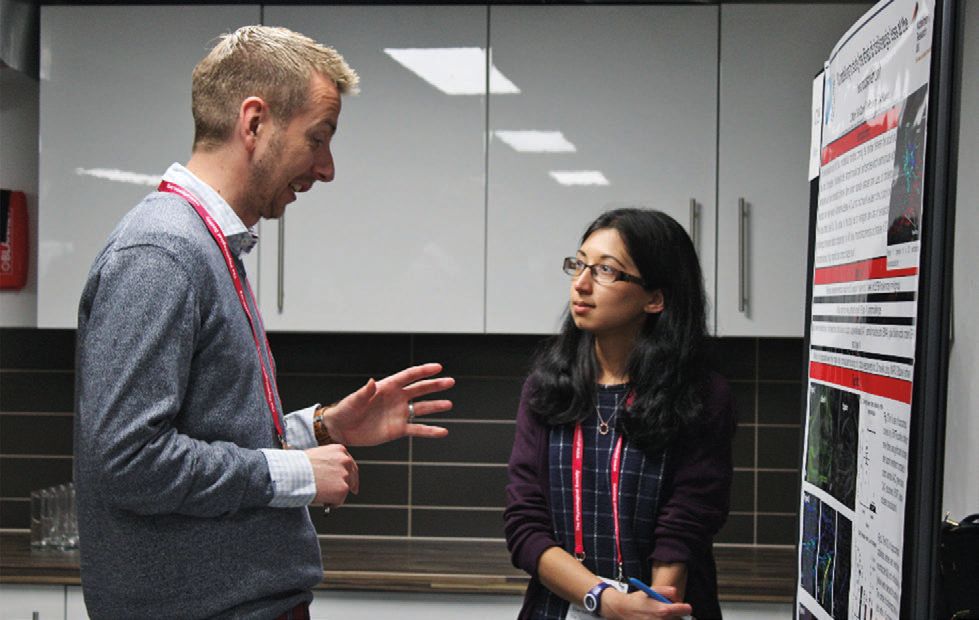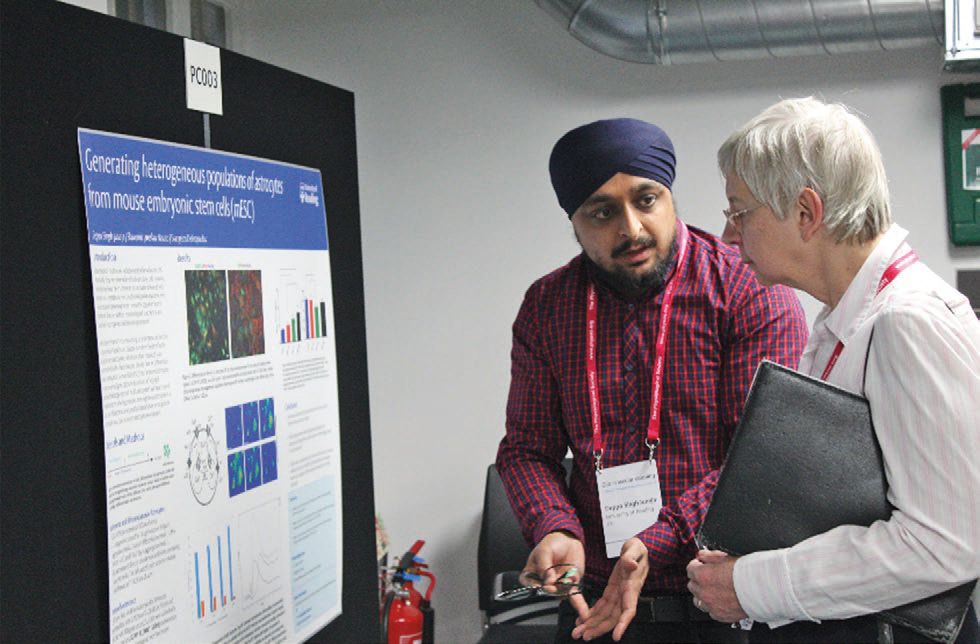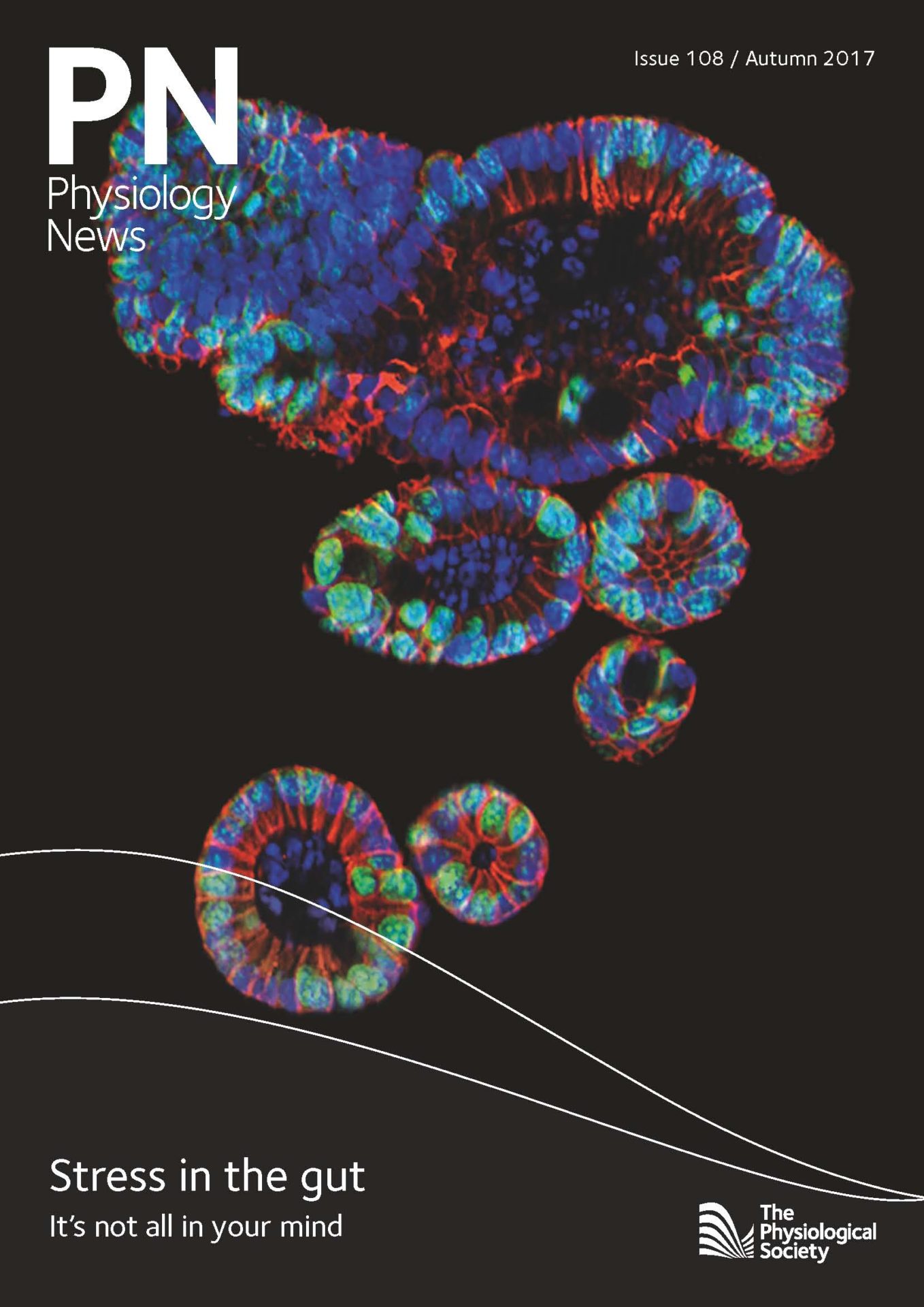
Physiology News Magazine
H3 Symposium: Glio-vascular Coupling
Events
H3 Symposium: Glio-vascular Coupling
Events
Lucinda Craggs
Centre for Biomarker Research (CeBioR), University of Huddersfield, UK
https://doi.org/10.36866/pn.108.18
12 May 2017,
Hodgkin Huxley House, London, UK
I picked up the flier for the glio-vascular meeting whilst attending the British Neuroscience Association’s Festival of Neuroscience (10–13 April, Birmingham) and immediately knew it was the kind of focused meeting that could provide me with a real value for money experience. I am so glad I found that flier, and that I made the decision to not only submit an abstract to the meeting, but also tick ‘yes to oral presentation’ during my submission. I recently returned to academia after a short career break working as a Medical Writer, and I have been fortunate enough to have been able to pick up my past work in neurovascular degeneration in small vessel disease (SVD) of the brain, despite moving institutions and research groups. I am currently in the early stages of developing an in vitro model to study the neurovascular unit, so this meeting was perfectly timed and a prime opportunity to get direct feedback on our proposed project from experts in the field.
As fate would have it, the first speaker was the ever-gracious Professor Mária A Deli (Hungarian Academy of Sciences, Hungary), a world leader in developing an in vitro model of the blood–brain barrier (BBB). Only two weeks prior, we had been discussing her papers in our laboratory group meetings and now I had the opportunity to hear Mária describe her techniques and the functionality of the model directly. Pure serendipity. Mária gave an excellent overview of her co-culture model of the three major cell types in the blood–brain barrier: endothelial cells, astrocytes and pericytes. Mária also spoke on some of her group’s recent work investigating mutations in the MFSD2A gene, the sodium-dependent lysophosphatidylcholine (LPC) transporter. MFSD2A is expressed in the endothelium of the blood–brain barrier, where MFSD2A mutations impaired transport activity in a cell-based assay. Her work implies that the leaky BBB in MFSD2A-knockout mice could be a result of defective transport of LPC’s into the BBB endothelium and raises the possibility that LPC’s have a role in membrane integrity and function at the BBB.
Following Mária, the second plenary speaker of the day was France’s Nathalie Rouach (College of France, INSERM, France). An expert in astrocyte physiology, Nathalie gave a detailed overview of her extensive efforts to delineate the many regulators of astrocytic function, morphology, and structure. Nathalie began with a detailed overview of the role of astroglial-expressed connexin 30 (Cx30) and its support of neuronal synapses. Her group have identified Cx30 as a key regulator of synaptic strength during hippocampus-based memory formation, revealing a critical role for Cx30 in maintaining the close relationship between astrocytic processes and neuronal synapses through intimate contacts made within synaptic clefts. Nathalie went on to describe the different morphologies of astrocytes and her very recent work identifying the novel role of FAT1 in the regulation of astrocytic morphology, reporting that FAT1 expression controlled elongation and ramification of astrocytic processes.

Following the two plenary talks were ten short presentations given by early career researchers (ECRs), split into two main categories: firstly vascular-focussed and then glia oriented presentations. We also had an informal poster session in the afternoon allowing even more ECRs the opportunity to present their work. Highlights from the vascular session included the in vivo monitoring of the neurovascular unit in mice during exercise and the finding that blood flow to visual cortices was maintained during exercise without any visual stimulation (Orla Bonnar, University of Sussex, UK), and the surprisingly understudied role of vascular factors in age-related hearing loss (presbycusis), elegantly described by Llwyd David Orton (Manchester Metropolitan University, UK).
Representing the neuronal and glia side were many more interesting talks, including Shereen Nizari (The University of Southampton) and her work investigating the link between neuronal signalling and the cerebral vasculature, AKA the neurovascular unit (NVU). Shereen reported that perivascular innervation by cholinergic neurons regulates vascular tone, highlighting the link between components of the neurovascular unit (NVU) and cholinergic loss in neurodegenerative disorders such as Alzheimer’s disease. Perhaps one of the most ground breaking ECR presentations was given by Noémie Mazaré (College of France, INSERM, France), where she described her group’s work to define the mechanisms by which astrocytes integrate and regulate neuronal and vascular signals through protein synthesis in their processes. They have worked to investigate the ‘endfeetome’ of astrocytic endfeet, where mRNA translation occurs in astroglial perivascular endfeet allowing protein delivery in a spatially controlled manner at the astrocytic–perivascular interface. Their work reveals a completely novel view of the way astrocytes communicate with the vascular bed, confirming the existence of local protein translation and maturation in astroglial perivascular processes.
The grand finale of the day was the debate ‘Glia vs Vascular: who’s in control’. While both Mária and Nathalie gave convincing overviews of their side of the fence, both were in agreement that with the advent of novel technologies, glio-vascular research is enjoying a revival, where old ideas and findings can be re-investigated and further analysed in ways which were not previously possible. Mária made a prediction that the new ‘fashionable’ research areas might include microvesicles and their role in communication between cells of the BBB. There was also some discussion of the ‘gaps in the market’, where Professor Joan Abbot (King’s College London, UK) advised ECRs that there is much opportunity for young researchers to find a niche and develop novel specialities.
I found all the presentations to be relevant in some way to my work, and truly valued the opportunity to present my own research in a supportive and engaging setting. I highly recommend attending such small and focused meetings where world leaders in the field were more than willing to engage with and educate early career scientists. A major benefit of the day was being able to speak with several other researchers who perform similar work to myself, allowing me to broaden my research network and hopefully develop new collaborations. My personal highlight was being able to speak with Mária Deli about my project aims and her invitation to join her in the lab to learn her co-culture techniques directly from her research group. In all, I found the day incredibly valuable in terms of the direct feedback and advice I received on my work, but it was also very inspiring to be able to meet with and speak directly to key opinion leaders in the field in such an informal and friendly environment.

